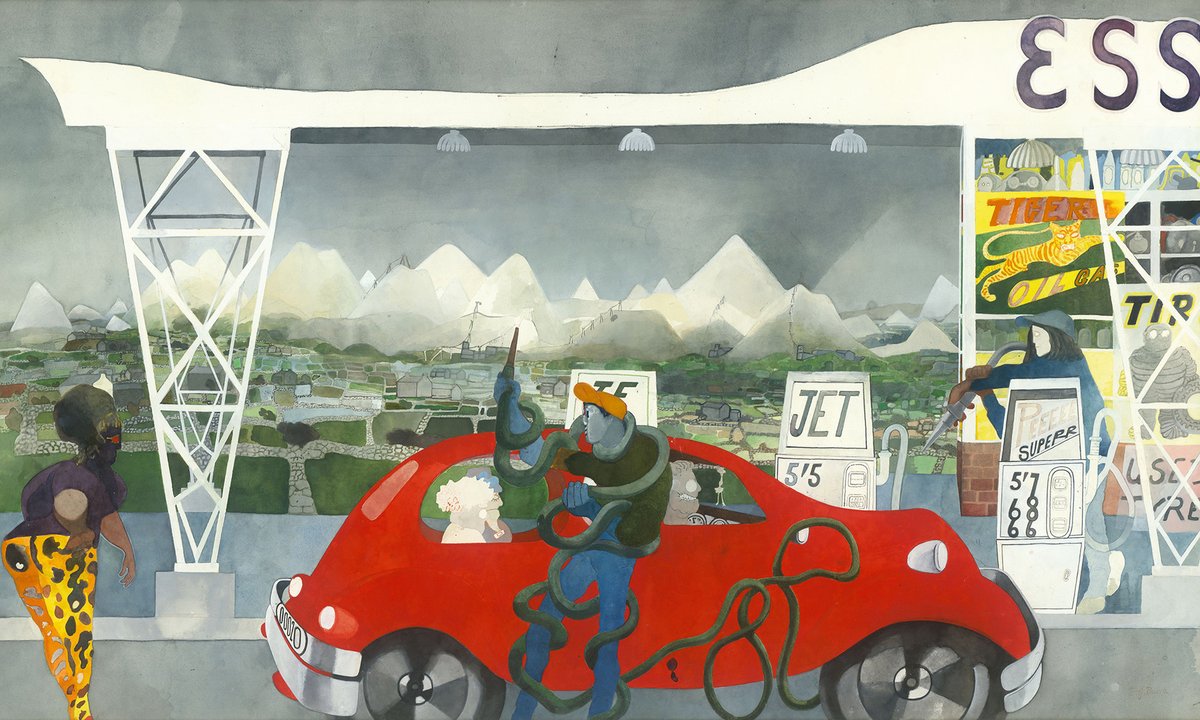
Enigmatic, intriguing, an anomaly—the adjectives generally utilized to Edward Burra (1905-76) trace on the English painter’s curious place within the panorama of Trendy British artwork. Burra’s distinctive eye ranged throughout the louche underbelly of metropolis life, conceived stage and costume designs, and later introduced a malevolent power to empty, brooding landscapes. Burra was the topic of a biography in 2007, a BBC movie, and a survey exhibition at Pallant Home Gallery in 2011, however a forthcoming retrospective at Tate Britain presents a comparatively unknown determine. “Individuals actually recognize his artwork, and so they discover it participating and attention-grabbing, however he simply will get forgotten about,” says the exhibition’s curator, Thomas Kennedy.
Burra achieved appreciable success in his lifetime, taking part within the London Worldwide Surrealist Exhibition in 1936, and briefly becoming a member of Paul Nash’s group Unit One. However his popularity has been stymied by his fierce resistance to categorisation, and his withering rebukes for anybody trying to debate “Fart”, as he referred to as it. In keeping with his buddy, the photographer Barbara Ker-Seymer, he solely grudgingly attended his 1973 retrospective on the Tate, strolling by “nearly with out pausing”.
Organized chronologically, the most recent exhibition presents greater than 80 work and newly found archival materials spanning the artist’s profession from the Twenties to the Nineteen Seventies. It consists of such rarities as Cornish Clay Mines (1970), on mortgage from a personal assortment.
Grubby letters
The archive, held by the Tate, gives unprecedented insights, and consists of “the a whole lot and a whole lot of grubby letters that are the principal proof for Burra’s private world”, in accordance with his biographer, Jane Stevenson. Letter-
writing was a lifeline for Burra, who was steadily incapacitated by rheumatoid arthritis and a hereditary type of anaemia, which resulted in a lifetime of continual ache.
Except for a interval at artwork college in London within the early Twenties, Burra lived all his life within the prosperous “Tinkerbell Towne” (as he referred to as it) of Rye, East Sussex. Right here he recuperated between bouts of sybaritic adventuring, reliving in paint the jazz golf equipment of Twenties Paris and Thirties New York—he lived for a number of months within the midst of the Harlem Renaissance. The work are “infused with the rhythmic beat of his music”, Kennedy says, and songs from Burra’s huge document assortment (one other aspect of the largely nonetheless uncatalogued archive) can be performed within the exhibition.
It was partly by music that Burra accessed reminiscences so vivid that he might dispense with preparatory sketches. “It’s a sight to behold,” Kennedy says. “He did free line drawings beneath after which painted straight on high. They’re so distinct.”
Watercolours like oils
Except for early oil work and a few collages, Burra painted solely in watercolour, seated comfortably at a desk and dealing on one small space at a time, to create an impact akin to oils. He made large-scale works by piecing collectively a number of sheets. The Tate’s personal Troopers at Rye (1941) consists of three sections, and is typical of the darkening character of the artist’s work through the battle years. Burra had been pressured to depart his beloved Spain in 1936 on the outbreak of the Civil Battle, and the savagery of battle haunted his work thereafter. The present explores this response in unprecedented element, due to his archive.
Burra continued to create exuberant stage designs, however as his well being additional declined, his portray took its cue from driving excursions round Britain together with his sister. His acid wit didn’t desert him, and in Cornish Clay Mines a petroleum pump meting out “Peeeee Superr” evinces a banal environmental concern, elevated by the majestic panorama past.
In these later work, guests might discern a reference to Ithell Colquhoun, whose retrospective might be seen on the identical ticket at Tate Britain. Although the 2 artists by no means knew one another, they shared some frequent floor as two quasi-Surrealists working outdoors of the motion—not least their alternative of medium, Kennedy factors out. “They each pushed the boundaries of watercolour,” he provides. “They experimented in numerous methods to create startling compositions.”
• Edward Burra, Tate Britain, London, 12 June-19 October

